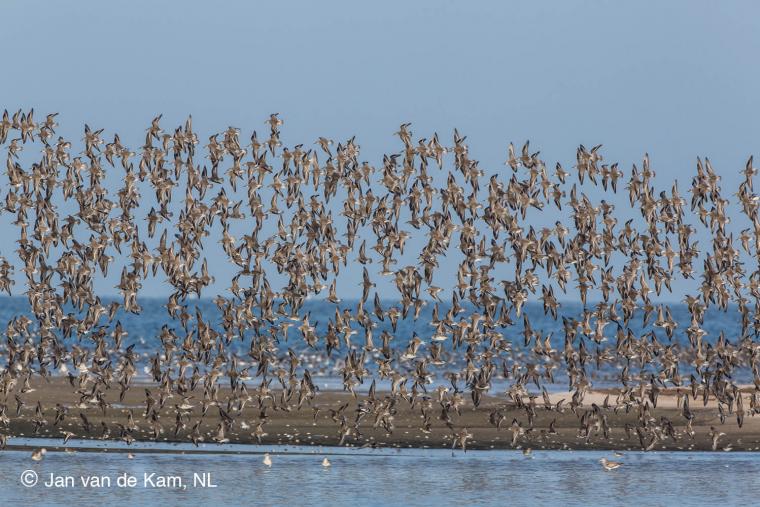Seasonal survival is the key to effective protection
Submitted by Johan on 12 March 2015.
 Get the paper!
Get the paper! With a little bit of ‘basic math’, Russian biologist Eldar Rakhimberdiev shows how changes in seasonal survival may be used as a tool to detect problems in bird populations. ‘A dip in survival during a certain period or in a certain place, means the population cannot cope with the problems they are facing there’, Rakhimberdiev says.
‘Seasonal survival is the key to effective protection’
‘It’s just basic math’, Rakhimberdiev says jokingly. Nevertheless, many biologists may frown while reading his latest article in Journal of Avian Biology. If not for trying to understand the math, it will be for the revolutionary approach of thinking about seasonal survival in bird populations.
Elementary to the idea of Rakhimberdiev and colleagues is the notion that there should not be such a thing as ‘a weakest link’ in the life of a bird population. The Russian biologist, currently working as a post-doc at the NIOZ Royal Netherlands Institute for Sea Research in The Netherlands and at Cornell University, Ithaca, USA, illustrates his case with a notorious bit of recent history from the Dutch Wadden Sea. ‘As a consequence of the cockle-dredging around the islet of Griend, from 1998 until 2003, in the western part of the Dutch Wadden Sea, red knots were not able to find enough food. Thanks to a very extensive and long-term colour ringing scheme, we were able to show that 81 out of 100 of the knots survived per year. During the cockle-dredging when knot-food became scarce, their seasonal survival in winter dropped to 78 (out of 100), while their summer survival peaked to 91. To us, this shows that the birds were not able to cope with the shortage of food around Griend in winter and either moved away or died at the start of the winter, the remaining fewer birds being in balance with their food resources again.’
In their article, Rakhimberdiev and colleagues state that problems in a certain place or time should ‘even out’ over the years. ‘If there is not enough food at a certain place, a population will eventually adapt and find a new equilibrium – this may include declines to much lower numbers. If there is a very unbalanced survival between seasons, this means the population is facing problems that they do not yet have answers to’, Rakhimberdiev says.
This new way of thinking has strong implications for nature protection, the authors think. ‘It means that seasonal survival measurements can give strong indications of the time and place where populations are currently squeezed, where the conservation problems of the day are found (and in need of a solution). It also means that the bottlenecks are transient and thus the basic research of long-breath is necessary to catch these informative times and periods. Only in this way one can try to protect bird populations that may not be in danger yet. It is somewhat sobering to realize that once the population loss has happened, one can no longer observe what the problem was.’
Access the paper here:
http://www.avianbiology.org/article/seasonal-mortality-and-sequential-de...
Translated and adapted from an original interview in Dutch by Rob Buiter published in the newsletters of the project Metawad, a project on the research of migrating birds in the Wadden Sea (see www.metawad.nl).